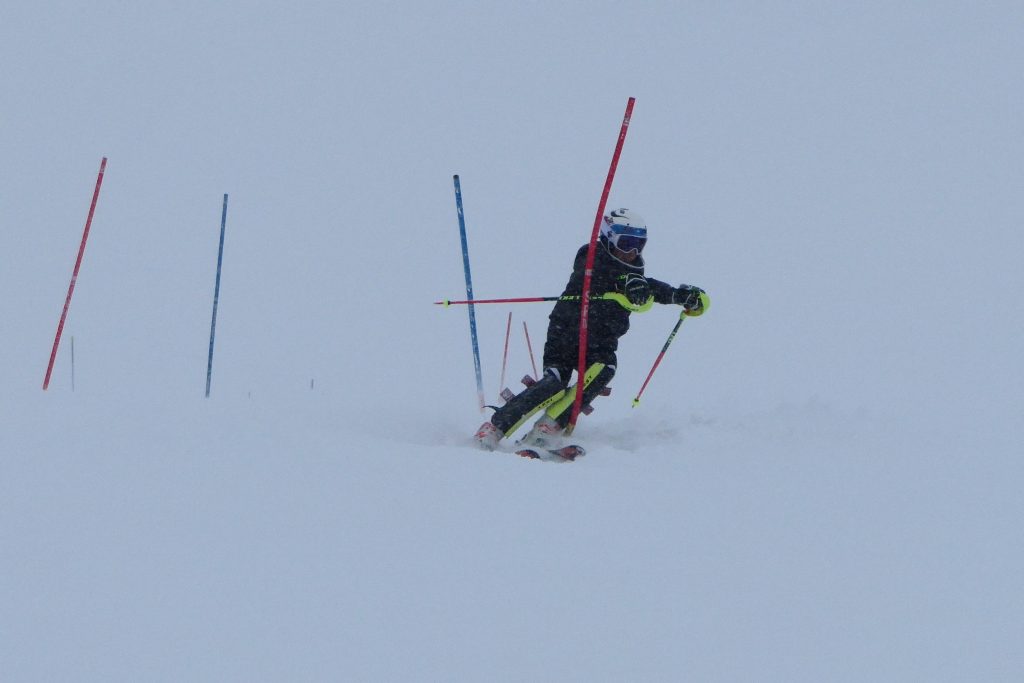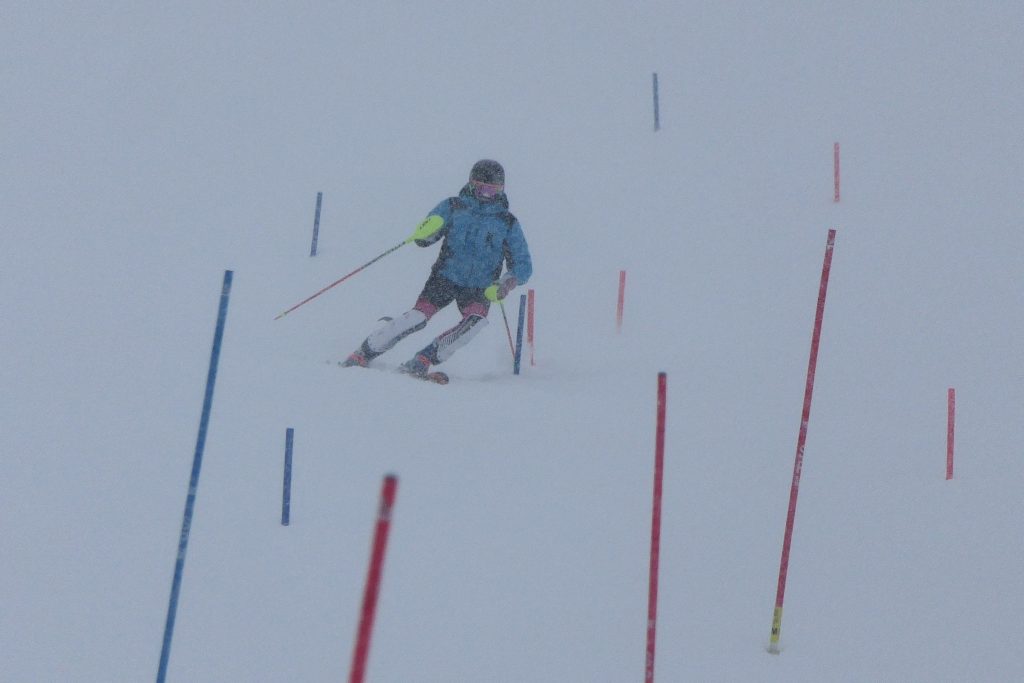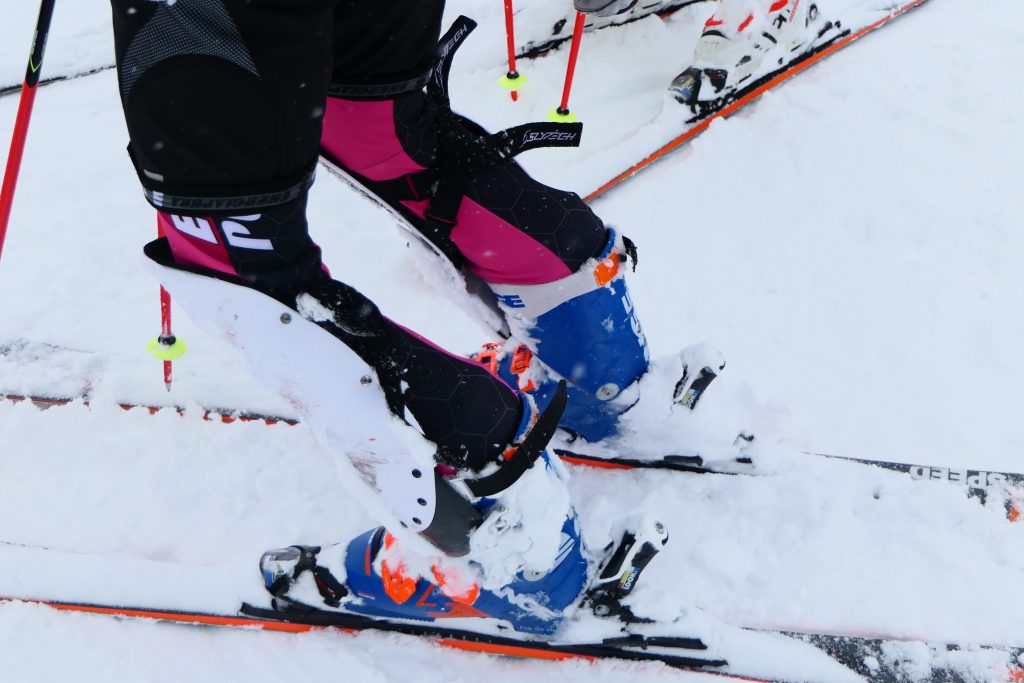Alex’s run after advancing the inside ski… relaxed and strong.
Daisy after working on correcting her inside leg… plus obligatory “by request” falls and wobbles.

Alex saved due to advancing the inside leg 
“Park and Ride” stance – no dynamics – Inside knee should be in front of the chest

Weather
Poor visibility, high winds and driving snow. Ideal training conditions! You can see the poles – that’s all that matters! When you realise that those conditions have no effect on you – then you won’t ever be scared or troubled by them again.
Alex
Alex needed to get back into the rhythm of things following a 10 week break for injury recovery. The course was ideal for that – moderate pitch and regular rhythm.
One of Alex’s favourite faults soon emerged – getting stuck on the inside ski with both feet close together and pitched out of the course. The issue is really that the two feet are side by side – while the inside one should be slightly advanced forward. Alex corrected this as is seen in his solid run in the video clip above. The key is in how angulation is formed. Alex was pulling back the outside hip – correctly – but that can leave the feet side by side. Moving the inside foot forward slightly frees the leg more and allows the pelvis to counter rotate (rotate opposite to the direction of the turn) even more – deepening the angulation. Angulation can be increased even more again by facing the shoulders (not the pelvis) towards the inside knee and ski.
Alex understood this and managed it in the course – but we will be working on it. It’s really about separating the shoulders from the hips and the different effects of pulling one hip back or pushing the other forward. The most important aspect is that it enables reflexes – such as the protective lower abdominal postural reflex.
We will also look into “visualising”. When in the start gate there should be absolutely no fear. Elimination of fear happens when there is confidence that you are solid on your skis technically. When those movements are fully understood and integrated you can play them like an internal video inside your head – seeing and feeling yourself going down the course. I usually see myself from behind! The thing is that your images and feelings must relate to your body – not to external distractions.
Daisy
Daisy is starting from scratch – rebuilding her skiing. This begins with dynamics and will require skating and pivoting to be introduced. The “park and ride” nature of her skiing became obvious when asked to do a basic exercise with dynamics and she couldn’t copy it. Normally a complete beginner can copy this after about 2 hours on skis. There’s no point dwelling on what isn’t working – so we will move straight on. Indoors I showed Daisy how to invert her foot inside the ski boot and connect this with her adductor muscles – then how to stand when turning with the inside knee moving towards her outside leg. The video is Daisy’s best run of the day which was the first time she had tried to correct this in a race course. Stay on the inside edges of both feet and activate the adductors all the time – both legs simultaneously.

